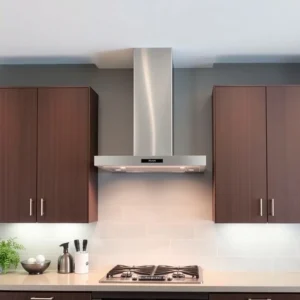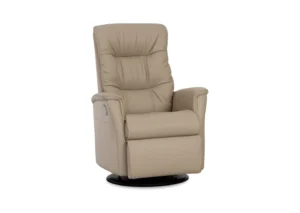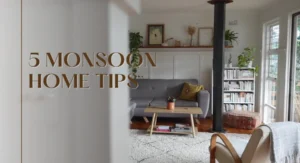How to Choose a Fence for Your Home?
By TOI Desk Report
September 16, 2023
Update on : October 2, 2024

Fencing is an essential element of any residential property, serving a multitude of purposes beyond just defining the boundaries of your land. A well-chosen fence can provide security, offer privacy, and enhance the overall aesthetic appeal of your home. However, with the wide array of fencing options available today, selecting the perfect fence for your needs can be a daunting task.
In this comprehensive guide, we will explore the various factors you should consider when choosing the ideal fence builders for your home. From understanding the different types of fencing materials to navigating local regulations and budgeting considerations, this post will equip you with the knowledge necessary to make an informed decision that meets your specific requirements.
Determine Your Purpose
Before diving into the specifics of fencing materials and installation, it’s essential to first identify the primary purpose you want your fence to serve. This will help you narrow down your options and ensure that the final product aligns with your needs.
Security
If security is your top priority, certain fencing materials may be better suited than others. Chain-link fences, for instance, offer a high level of security by creating a physical barrier that’s challenging to breach. Alternatively, solid wood or metal fences can provide an even greater sense of protection, making it more difficult for intruders to gain access to your property.
Privacy
For homeowners seeking increased privacy, taller fences made of wood, vinyl, or composite materials are often the best choice. These types of fences can effectively block line-of-sight from neighboring properties, creating a secluded outdoor space that’s shielded from prying eyes.
Aesthetic Appeal
If enhancing the curb appeal of your home is a key consideration, the aesthetic qualities of the fence will play a crucial role. Decorative metal fences, such as wrought iron or aluminum, can lend an elegant and sophisticated touch to your property, while wood or vinyl fences can be customized to complement the architectural style of your home.
Pet Containment
For homeowners with furry companions, the fence’s ability to keep pets safely contained within the property is an essential factor. Chain-link or solid wood fences are often the most effective options for pet owners, as they provide a sturdy barrier that’s difficult for animals to breach.
By clearly defining the primary purpose of your fence, you’ll be better equipped to evaluate the various material options and make a selection that best meets your needs.
Types of Fencing Materials
Now that you’ve identified the primary purpose of your fence, let’s explore the different fencing materials available and their respective pros and cons.
Wood Fencing
Wood fencing is a popular choice among homeowners due to its versatility, natural aesthetic, and relatively affordable cost. Depending on your preferences, you can opt for picket, privacy, or shadowbox designs, each offering a unique visual appeal.
Pros:
- Customizable design options
- Natural, warm appearance
- Relatively affordable compared to other materials
- Easy to install, especially for DIY projects
Cons:
- Requires regular maintenance (staining, painting, or sealing)
- Susceptible to weathering, rotting, and insect damage over time
- May not provide the highest level of security or privacy
Vinyl Fencing
Vinyl fencing has gained significant popularity in recent years due to its durability, low maintenance requirements, and wide range of color and style options. Vinyl fences are often considered a more modern and maintenance-free alternative to traditional wood fencing.
Pros:
- Highly durable and resistant to weathering, rotting, and insect damage
- Minimal maintenance required (no painting or staining)
- Variety of color and style options to complement your home’s aesthetic
- Typically more affordable than metal fencing
Cons:
- May not provide the same level of privacy as solid wood fences
- Can appear less natural or “rustic” compared to wood
- Installation can be more complex and may require professional assistance
Chain-Link Fencing
Chain-link fencing is a practical and affordable option that has been a staple in residential and commercial properties for decades. While it may not be the most visually appealing choice, it offers a functional and durable solution for various fencing needs.
Pros:
- Highly durable and long-lasting
- Relatively inexpensive compared to other fencing materials
- Versatile and can be used for a variety of applications (pet containment, sports courts, etc.)
- Easy to install, even for DIY projects
Cons:
- May not provide the desired level of privacy or aesthetic appeal
- Can appear utilitarian and industrial in some settings
- May require additional privacy slats or screening to enhance the visual appeal
Metal Fencing (Aluminum & Wrought Iron)
Metal fencing, such as aluminum and wrought iron, offers a more sophisticated and elegant aesthetic compared to other fencing options. These materials are renowned for their durability, security features, and customization possibilities.
Pros:
- Highly durable and long-lasting
- Provide a strong, secure barrier
- Offer a wide range of design options to complement your home’s architecture
- Require minimal maintenance
Cons:
- Generally more expensive than other fencing materials
- Installation can be more complex and may require professional assistance
- May not be the best choice for pet containment or privacy, depending on the design
Composite Fencing
Composite fencing is a newer and increasingly popular option that combines the natural appearance of wood with the low-maintenance benefits of synthetic materials. These fences are often made from a blend of wood fibers and recycled plastics, making them an environmentally-friendly choice.
Pros:
- Durable and resistant to weathering, rotting, and insect damage
- Require minimal maintenance (no painting or staining)
- Offer a natural, wood-like appearance
- Environmentally-friendly and sustainable
Cons:
- Generally more expensive than traditional wood fencing
- May not provide the same level of customization options as wood
- Installation can be more complex compared to some other fencing materials
By understanding the unique characteristics and trade-offs of each fencing material, you can make an informed decision that aligns with your specific needs and preferences.
Assessing Your Property
Before selecting a fencing solution, it’s essential to carefully assess the unique features and characteristics of your property. This will help you identify any potential challenges or considerations that may influence your fencing choice.
Property Lines
Knowing the exact boundaries of your property is crucial when installing a fence. Be sure to consult with your local authorities or a professional surveyor to accurately determine your property lines, as this will ensure that your fence is positioned correctly and avoid any legal disputes with your neighbors.
Topography
The terrain and slope of your property can also play a significant role in the type of fence you choose. For instance, fences installed on uneven or sloped ground may require additional support or specialized installation techniques to ensure stability and a seamless appearance.
Existing Landscaping
Integrating your new fence with the existing landscaping features of your property is essential for maintaining a cohesive and visually appealing outdoor space. Consider the placement of trees, shrubs, and other landscaping elements when selecting the appropriate fencing material and design.
By carefully assessing these property-specific factors, you can make a more informed decision that ensures your fence not only meets your needs but also complements the unique characteristics of your home and surrounding environment.
Local Regulations and HOA Guidelines
Before finalizing your fencing plans, it’s crucial to familiarize yourself with the local zoning laws and regulations in your area, as well as any guidelines set forth by your Homeowners Association (HOA), if applicable.
Zoning Laws and Regulations
Depending on your location, there may be specific requirements regarding the height, material, and placement of fences on residential properties. It’s essential to check with your local authorities to ensure that your fencing plans comply with these regulations, as non-compliance could result in costly fines or the need to remove or modify the fence.
Homeowners Association (HOA) Guidelines
If your property is part of a homeowners association, you’ll need to review the organization’s specific guidelines and approval processes for installing new fencing. HOAs often have strict rules regarding the acceptable types of fencing materials, colors, and designs to maintain a cohesive aesthetic throughout the neighborhood.
By understanding and adhering to these local regulations and HOA guidelines, you can avoid potential issues or delays in the installation process and ensure that your fence is fully compliant with all relevant requirements.
Budgeting for Your Fence
Fencing can be a significant investment, and it’s essential to plan your budget accordingly. The cost of your fence will depend on several factors, including the material, size, and any additional features or accessories you may choose to include.
Material Costs
The type of fencing material you select will have a significant impact on the overall cost of your project. Generally, more affordable options like chain-link or basic wood fencing will be less expensive than high-end materials like wrought iron or custom-designed vinyl.
Installation Costs
In addition to the material costs, you’ll also need to factor in the cost of installation. Hiring a professional contractor to handle the installation may be more expensive than a DIY approach, but it can ensure a proper and secure installation, potentially saving you money in the long run.
Additional Expenses
Don’t forget to account for any additional expenses, such as permits, landscaping modifications, or specialized features like gates or decorative post caps. These ancillary costs can quickly add up, so it’s essential to have a comprehensive understanding of the total project budget.
By carefully planning your fencing budget and considering all potential expenses, you can make an informed decision that balances your desired features and aesthetic with your financial constraints.
Installation Options
When it comes to installing your new fence, you’ll have two primary options: DIY or professional installation.
DIY Installation
For homeowners with some basic carpentry or construction experience, a DIY fence installation can be a cost-effective and rewarding project. This approach allows you to have greater control over the process and potentially save on labor costs.
Pros:
- Lower overall project costs
- Opportunity to learn new skills and take pride in the finished product
- Flexibility to customize the installation to your specific needs
Cons:
- Requires a significant time investment and physical labor
- Potential for mistakes or improper installation, which could compromise the fence’s stability and longevity
- May not have the necessary tools or equipment for a professional-grade installation
Professional Installation
Hiring a qualified fencing contractor or installer can be the best option for homeowners who want a hassle-free experience and a guarantee of quality workmanship.
Pros:
- Expertise and experience in proper fence installation techniques
- Access to specialized tools and equipment for a seamless installation
- Warranty or guarantee on the work performed
- Potentially faster completion time compared to a DIY project
Cons:
- Generally more expensive due to labor costs
- Less control over the installation process and design customization
When deciding between DIY or professional installation, consider your own skill level, the complexity of your fencing project, and the potential long-term benefits of a professional installation. Whichever option you choose, be sure to thoroughly research and vet any contractors to ensure a high-quality and satisfactory outcome.
Maintenance Requirements
Regardless of the fencing material you choose, it’s essential to understand the ongoing maintenance requirements to keep your fence in top condition and extend its lifespan.
Routine Inspections
Regular inspections of your fence, at least once or twice a year, can help you identify any signs of wear, damage, or deterioration, allowing you to address issues promptly before they worsen.
Cleaning and Upkeep
The specific cleaning and maintenance needs will vary depending on the fencing material. For example, wood fences may require periodic staining or painting, while vinyl or metal fences may only need occasional cleaning to remove dirt and debris.
Seasonal Considerations
Certain fencing materials may be more susceptible to weather-related damage, such as warping, cracking, or rusting. Familiarize yourself with the seasonal care requirements for your chosen fence to ensure it remains in optimal condition year-round.
By staying on top of the maintenance needs for your fence, you can extend its lifespan, maintain its aesthetic appeal, and avoid costly repairs or replacements down the line.
Final Considerations
As you near the end of your decision-making process, it’s important to take a step back and consider all the factors that have been discussed in this comprehensive guide.
Balancing Aesthetics, Functionality, and Budget
Ultimately, the perfect fence for your home will be the one that strikes the right balance between your desired aesthetic, functional requirements, and budgetary constraints. Take the time to carefully weigh the pros and cons of each fencing material and installation option to ensure you make a well-informed choice.
Thorough Research and Planning
Choosing a fence is not a decision to be made lightly. Invest the time to thoroughly research your options, consult with local experts, and plan your project meticulously to avoid any unexpected challenges or setbacks during the installation process.
Exploring Local Resources
Don’t hesitate to reach out to local fencing suppliers, contractors, or even your neighbors for additional insights and recommendations. Their firsthand experience and knowledge can be invaluable in helping you select the perfect fence for your home.
Conclusion
Selecting the right fence for your home is a crucial decision that can have a significant impact on the security, privacy, and overall aesthetic of your property. By considering the factors outlined in this comprehensive guide – from understanding the various fencing materials to navigating local regulations and budgeting – you’ll be well-equipped to make an informed choice that meets your specific needs and enhances the beauty of your home.
Remember, the perfect fence is not a one-size-fits-all solution, but rather a unique reflection of your personal preferences and the unique characteristics of your property. Take the time to carefully evaluate your options, seek expert advice when necessary, and don’t be afraid to explore creative solutions that truly capture your vision.
We hope this guide has provided you with the knowledge and confidence to embark on your fencing project with a clear understanding of the steps involved. If you have any additional questions or would like to share your own fencing experiences, feel free to leave a comment below. Happy fencing!
Call-to-Action
If you found this guide helpful, be sure to subscribe to our newsletter for more home improvement tips and resources.
















